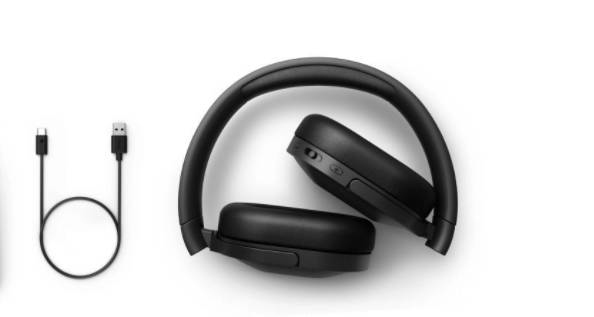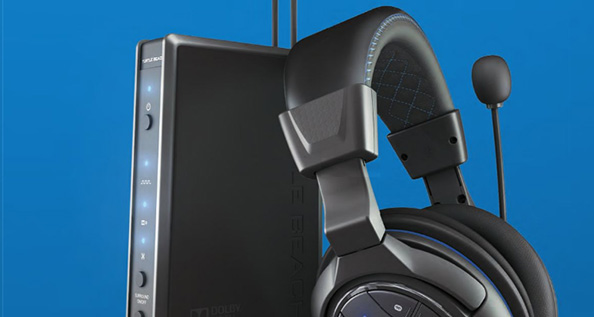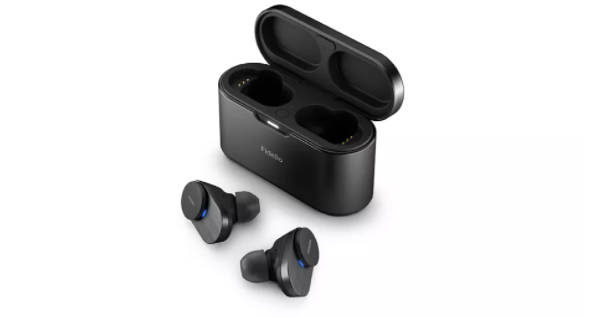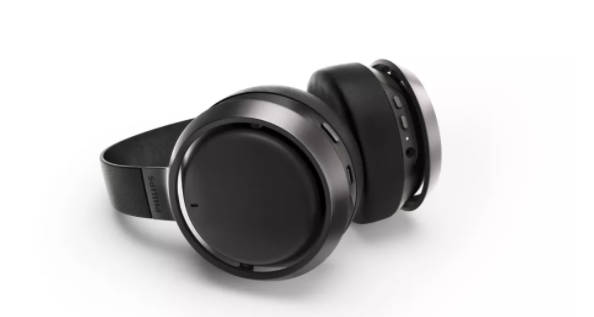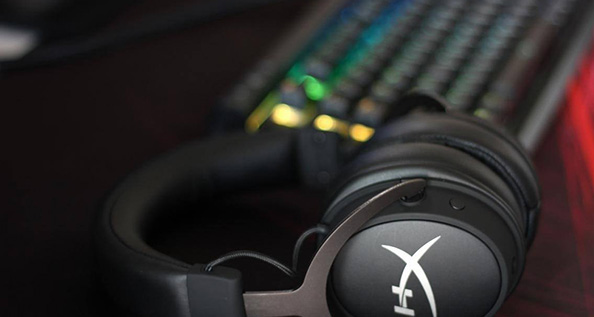Philips Fidelio L3 headphones review: Seriously sophisticated sound
Design & Comfort
Dimensions: 304mm (H) x 160mm (W) x 52mm (D) / Weight: 360g
Buttons: on/off; ANC control, voice assistant
Auto pause upon removal
Philips Headphones app
Slip the headphones out of the box and it's the included carry case that you'll see first, a trapezoid-shaped zip-up container, complete with Philips branded loop to the upper side. It's bigger than some carry cases, such as the more slender one with Bose's NC 700
Headphones, but its stiffened panels and soft interior lining will keep the Fidelio L3 protected nonetheless.
The headphones themselves are nicely understated: there are Philips logos towards the connection point between earcups and headband, but they're not large or obtrusive; while the debossed 'Fidelio L3' on the headband is something you'll only glimpse if the light catches it a certain way. Shades of black and a more satin grey metallic are the total of the subdued colour palette - the latterbeing the colour of the metal 'rings' to which the almost free-floating earcups are attached.
Comfort is considerable, in particular thanks to the large aperture of the earcups. Even big ears aren't going to get chapped in these. Then there's the soft Muirhead leather coating the plush memory-foam cushions. We've had the L3 adorning our head for days during a week or so of use, and the comfort only goes from good to great over time thanks to this well considered selection of materials and design.
The fit is also arranged so the headband sits fairly vertically over the head, which helps avoid it slipping around - the kind of motion that can cause sound profile changes in plenty of competitor headphones. Sure, you can still reposition the L3's earcups relative to your ear to get a different (less desirable) sound profile, but that's not going to happen unless you're being purposeful about pushing them around.
In terms of controls there are a few additions: physical buttons beneath the earcups on both sides; touch-sensitive tap- and swipe-based controls on the main exterior part of the right earcup only; and there's also an app.
In terms of physical buttons, the left side features the power button, while the right features Bluetooth pairing and voice assistant control. There's a somewhat muffled voice that talks to you based on those buttons' use - "power on", and so forth - which is useful given how close together the pair of buttons is on the right side (by which we mean they're far too close).
Then there's the touch-based controls, which are sensitive enough to be highly responsive. That's great on the one hand, but sometimes it's hyper responsive - you might be trying to skip a track, for example, but instead pause the music as the headphones register a central tap rather than back-to-front swipe. It'll take practise to get this right and we've seen it implemented far better elsewhere, such as in the Bose NC 700 Headphones. That said, the L3's auto-pause/play when removing/returning the headphones from/to your head is super and has been consistent throughout our use.
Last up is the app - called Philips Headphones - which with our first pair of review headphones was of zero use to us as it crashed every time (tested on four different Android phones and one iPhone). Philips sent an additional pair of L3 headphones to a colleague, who had no such problems, so we can only put this down to an internal software version in the headphones themselves. Off-the-shelf models shouldn't suffer this issue. Still, we were able to live without the app to be honest - it has EQ adjustment and some controls, our colleage tells us - because sometimes it's little more than a distraction anyway.
Sound Quality
Closed cup design, 40mm drivers
Frequency response: 7Hz to 40kHz
Hybrid Active Noise Cancelling (ANC)
Battery: 32-38 hours per charge; USB-C charging
Bluetooth 5.1; supports: SBC, aptX, aptX HD, AAC / Hi-Res Audio So the Fidelio L3 is subtle by design, supremely comfortable, and its sound is seriously sophisticated too. The kind of immersive quality you can get from over-ears compared to less comfortably fitting in-ears is really quite something; and as these headphones rest like a cloud on your head it's a non-obtrusive way to get deep into your music.
From our very first listen the thing that stood out is the considerable articulation in the higher-end frequency ranges. The kind of sharpness these headphones can deliver without ever, indeed, sounding too sharp is quite something. Hi-hats, for example, take on a whole new meaning, really giving tracks an open and airy soundstage - but one that's also firmly grounded thanks to the way the rest of the range is handled.
That's backed up by taut bass delivery that, as the spec details, is capable of hitting extremely low levels - allegedly to 7Hz, but you'll never even hear that, as it's not audibly feasible. Still, crank out some underground bass tracks on these headphones and they won't disapp




